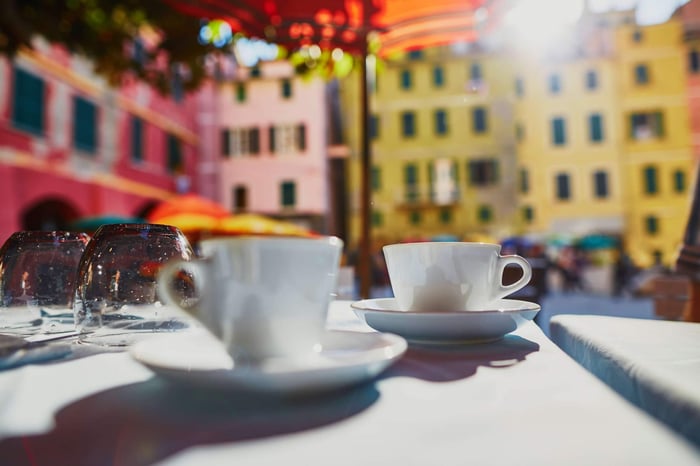Europe has long been celebrated for its rich and diverse coffee and tea traditions. From the bustling espresso bars of Italy to the refined afternoon tea culture of England, each country has crafted unique rituals that elevate the simple act of brewing a warm beverage. Fortunately, you don’t need to book a flight to experience these traditions. With a few thoughtful additions to your home setup, you can bring Europe’s coffee and tea culture to your kitchen and enjoy an authentic experience every day.
The Essence of European Coffee Culture
Italian Espresso Rituals
Italy’s coffee culture is centered around espresso—strong, rich, and served in small cups for quick enjoyment. Italians often take their coffee standing at a bar, engaging in lively conversation before heading off to their next destination. To capture this experience at home, invest in a quality espresso machine or a stovetop Moka pot. Using finely ground coffee beans and a precise brewing method, you can replicate the bold flavors found in Italian cafes. Pair your espresso with a fresh pastry like a cornetto for an authentic touch.
The French Café Experience
In France, coffee is an essential part of daily life, often enjoyed at a leisurely pace in a charming café. A popular choice is café au lait—a smooth combination of strong coffee and steamed milk. To bring this experience into your home, opt for a French press, which produces a robust and flavorful brew. Serve it in a wide-rimmed bowl with a freshly baked croissant, and take the time to enjoy each sip as the French do.
Viennese Coffeehouse Tradition
Austria’s coffeehouses are legendary, offering an atmosphere of elegance and intellectual conversation. A staple of this culture is the Wiener Melange, a creamy coffee similar to a cappuccino. To recreate this at home, use a drip coffee maker or an espresso machine with a milk frother. Top your coffee with a dusting of cocoa powder, and serve it with a slice of Sachertorte for a truly Viennese touch.
The Richness of Turkish Coffee
While not part of the EU, Turkey has profoundly influenced Europe’s coffee culture. Turkish coffee is brewed slowly in a special pot called a cezve, creating a thick, aromatic drink. The key to mastering this method is using very fine coffee grounds and heating the mixture over low heat until it froths. Traditionally served in small cups with a glass of water and Turkish delight, this coffee is meant to be savored slowly.
European Tea Traditions at Home
English Afternoon Tea
The British take their tea seriously, with afternoon tea being a cherished tradition. Typically served between lunch and dinner, this experience involves black tea, milk, and an assortment of finger sandwiches and pastries. To replicate this at home, choose high-quality loose-leaf black tea, such as Earl Grey or Assam. Brew it in a teapot, serve with milk and sugar, and present it alongside scones with clotted cream and jam for an authentic British tea experience.
The Tranquility of Scandinavian Fika
In Sweden, fika is more than just a coffee or tea break—it’s a time to relax and connect with others. Scandinavians enjoy coffee or tea with sweet pastries, such as cinnamon buns. To embrace this tradition, set aside time each day to step away from distractions, brew a comforting cup of tea or coffee, and pair it with a homemade pastry. The key is to enjoy the moment rather than rush through your drink.
Russian Samovar Tea Culture
Russia’s tea culture is centered around the samovar, a large metal container that keeps water hot for brewing tea throughout the day. Traditional Russian tea is often black and served strong with lemon, jam, or honey. While you may not have a samovar, you can still embrace this tradition by using a teapot with a built-in strainer and enjoying your tea with traditional Russian treats like pryaniki (spiced gingerbread cookies).
Primula Stovetop Espresso Maker
Creating a European Coffee and Tea Ambiance at Home
Bringing Europe’s coffee and tea culture into your home goes beyond just brewing techniques. It’s about setting the right atmosphere. Here are a few ways to enhance your space:
Invest in Quality Serveware: European coffee and tea culture places importance on presentation. Use porcelain cups, elegant teapots, and delicate saucers to elevate your experience.
Create a Cozy Nook: Set up a dedicated space in your home with comfortable seating, soft lighting, and a small table for your beverages.
Incorporate Music: Play soft classical music, French jazz, or even traditional European folk tunes to transport yourself to a café or tearoom.
Use Fresh Ingredients: Authenticity matters, so opt for high-quality beans, loose-leaf teas, and fresh milk to achieve the best flavors.
European-Inspired Coffee and Tea Pairings
To fully embrace this experience, consider pairing your beverages with traditional European treats:
Espresso & Biscotti (Italy) – The crunchy texture of almond biscotti complements the boldness of espresso.
Café au Lait & Croissant (France) – Buttery, flaky croissants enhance the smoothness of café au lait.
Viennese Melange & Sachertorte (Austria) – The richness of chocolate cake pairs beautifully with a creamy coffee.
Turkish Coffee & Baklava (Turkey) – Sweet, nutty baklava balances the intensity of Turkish coffee.
Earl Grey Tea & Scones (England) – The bergamot flavor of Earl Grey complements the sweetness of scones and jam.
Fika Coffee & Cinnamon Buns (Sweden) – The warm spices of cinnamon buns enhance the experience of a relaxed coffee break.
Final Thoughts
Europe’s coffee traditions and tea culture offer more than just delicious drinks—they provide a meaningful way to connect with history, relaxation, and social rituals. By incorporating these traditions into your home, you can enjoy a rich, cultural experience without leaving your kitchen. Whether it’s a strong Italian espresso, a comforting British tea, or a leisurely Swedish fika, each sip brings a taste of Europe’s coffee culture to your daily routine.

